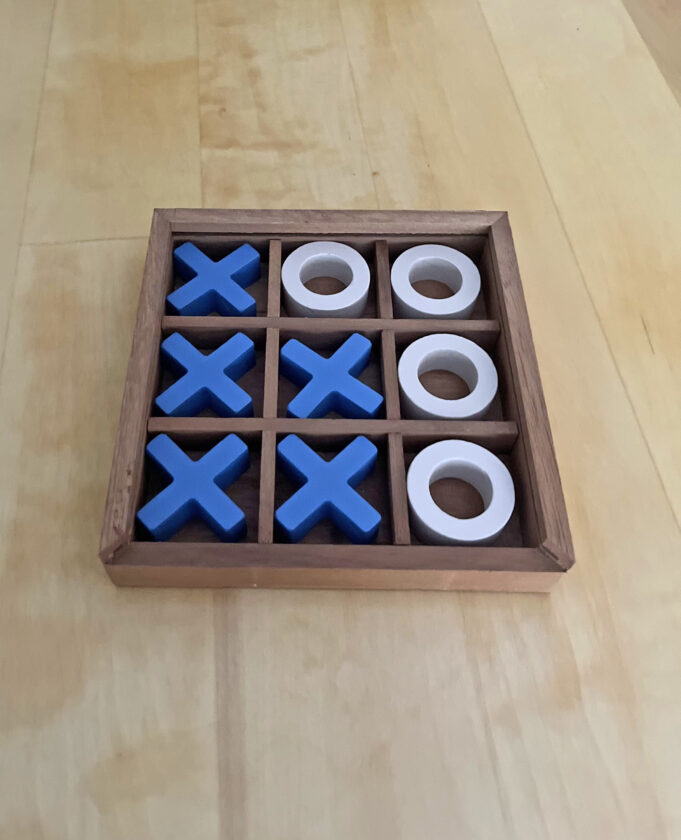Tic-Tac-Toe

The game of Tic-Tac-Toe is also known as Noughts and Crosses, Hugs and Kisses or just X and O. (Provided photo — Diane Chase)
I had impulsively bought a wooden Tic-Tac-Toe game set for my mother to use. The classic game was familiar to her, didn’t take long to play and she usually won. Just like my children, she would obsess about playing, pointing at which piece for me to move.
I remember playing endless rounds with my kids, covering pieces of scrap paper with tiny grids, arguing about who was supposed to go first. Yes, I argued with small children about a strategy game. Yes, I think people are capable of setting a dinner table while playing Tic-Tac-Toe. Multitasking gets dinner on the table.
In case you aren’t familiar with the game, players draw or use an existing three-by-three grid (forming nine squares). Players alternate turns, placing either an X or an O in each grid, trying to get three in a row either horizontally, vertically or diagonally.
According to the Etymology Dictionary, the three-in-a-row game, where players mark X or O, is also known as Noughts and Crosses, Hugs and Kisses, X and O and Tit-Tat-Toe. Early references to the classic game date back to the mid-1800s, although references to similar games date back to Roman and Egyptian cultures. The Roman game of Terni Lapilli is possibly an early version of Tic-Tac-Toe. Terni Lapilli translates to mean three pebbles. Players use a spoked wheel board with eight grids and each player receives three game pieces, either pebbles or coins. The difference between Terni Lapilli and Tic-Tac-Toe is that the wheel-shaped board avoids having the game end in a tie.
Alyssa Choi’s National Museum of Mathematics paper, Tic-Tac-Toe, delves into mathematical proofs and strategies for winning the traditional three-in-a-row game. There are competitions, including a Tic-Tac-Toe World Championship, as well as online versions where participants answer a themed question correctly to win a square.
When my children were young, they would often bemoan that I’m a fun killer. I can’t just play for fun; there always has to be something to learn. Later, they understood that learning and questioning things is fun. Tic-Tac-Toe doesn’t just keep youngsters busy (or my mother), but helps develop critical thinking (making decisions), problem-solving (pattern recognition) and social skills (learning to lose or win graciously). Enjoy! Tic-Tac-Toe, three in a row!


